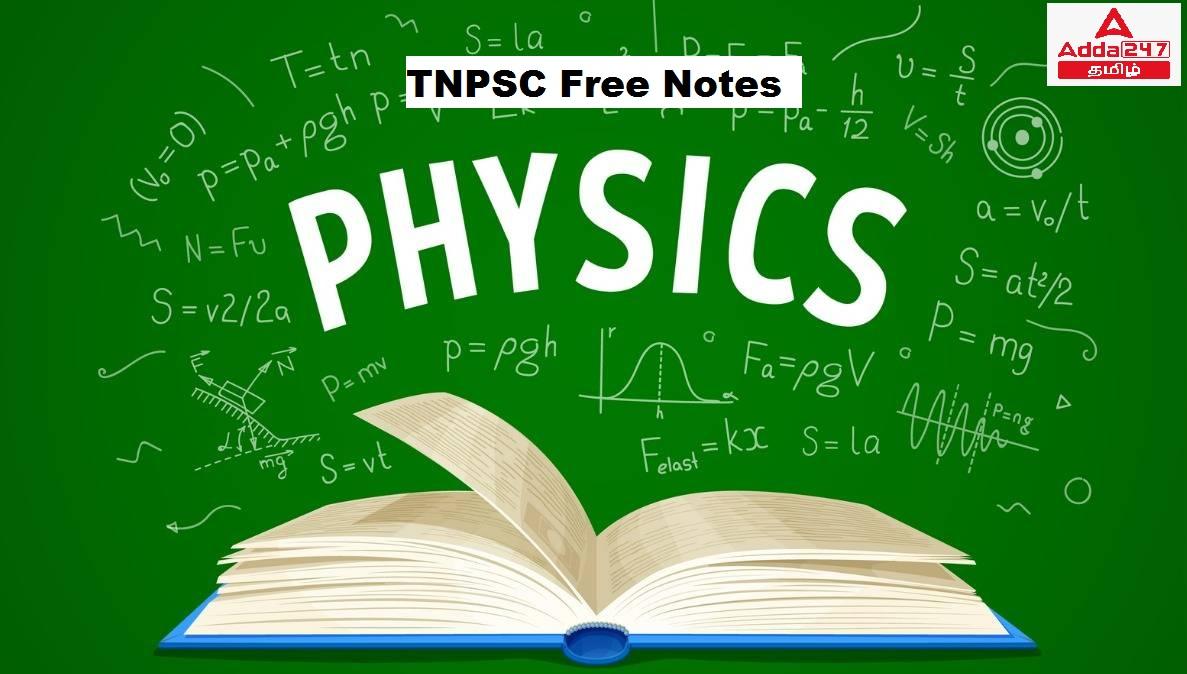இந்தக் கட்டுரையில், TNPSC குரூப் 1, குரூப் 2, குரூப் 2A, குரூப் 4 மாநிலப் போட்டித் தேர்வுகளான TNUSRB, TRB, TET, TNEB போன்றவற்றுக்கான முறைகள் இலவசக் குறிப்புகளைப் பெறுவீர்கள்.தேர்வுக்கு தயாராவோர் இங்குள்ள பாடக்குறிப்புகளை படித்து பயன்பெற வாழ்த்துகிறோம்.
Measurement of basic quantities
Measurement of length
i) Measurement of small distances: screw gauge and vernier caliper:
Screw gauge: The screw gauge is an instrument used for measuring accurately the dimensions of
objects up to a maximum of about 50 mm. The principle of the instrument is the magnification of
linear motion using the circular motion of a screw. The least count of the screw gauge is 0.01
mm.
Vernier caliper: A vernier caliper is a versatile instrument for measuring the dimensions of an
object namely diameter of a hole, or a depth of a hole. The least count of the vernier caliper is
0.01 cm
Measurement of large distances:
Triangulation method for the height of an accessible object:
height h = x tan θ
Parallax method:
Parallax is the name given to the apparent change in the position of an object with respect to the
background, when the object is seen from two different positions. The distance between the two
positions (i.e., points of observation) is called the basis (b).
RADAR method:
The word RADAR stands for radio detection and ranging. A radar can be used to measure
accurately the distance of a nearby planet such as Mars. In this method, radio waves are sent
from transmitters which, after reflection from the planet, are detected by the receiver. By
measuring, the time interval (t) between the instants the radio waves are sent and received, the
distance of the planet can be determined
Measurement of mass:
Mass is a property of matter. It does not depend on temperature, pressure and location of
the body in space. Mass of a body is defined as the quantity of matter contained in a
body. The SI unit of mass is kilogram (kg). These may vary from a tiny mass of electron
(9.11×10 -31 kg) to the huge mass of the known universe (=10 55 kg).
Ordinarily, the mass of an object is determined in kilograms using a common. For
measuring larger masses like that of planets, stars etc., we make use of gravitational
methods. For measurement of small masses of atomic/subatomic particles etc., we make
use of a mass spectrograph.
Some of the weighing balances commonly used are common balance, spring balance,
electronic balance, etc.
Measurement of Time intervals:
A clock is used to measure the time interval. An atomic standard of time, is based on the periodic
vibration produced in a Cesium atom. Some of the clocks developed later are electric oscillators,
electronic oscillators, solar clock, quartz crystal clock, atomic clock, decay of elementary
particles, radioactive dating etc
**************************************************************************
| Adda247 TamilNadu Home page | Click here |
| Official Website=Adda247 | Click here |




